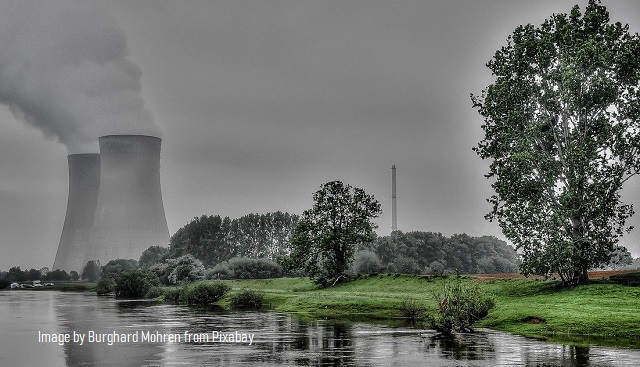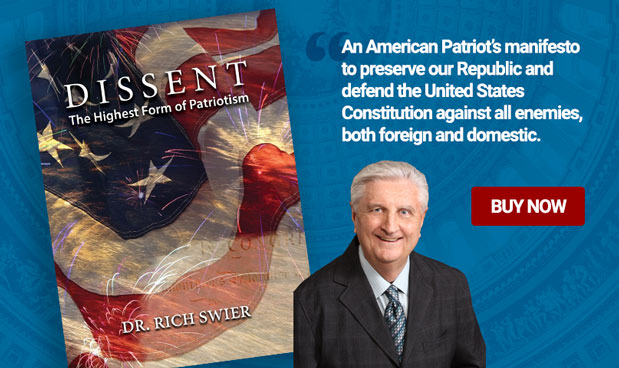Nuclear Is A Renewable Energy: Wind and Solar lobbyists are fighting this reality!

As a physicist, I believe that one of the reasons that intelligent energy policies have not gained sufficient traction is that we are allowing those with political agendas (vs independent scientists) to define some key energy terms.
[One thing I know from golf, is that a match is usually won or lost at the first tee — where the terms and conditions are agreed on.]
Outside of “fiscal responsibility” and “all of the above” the most significant misused concept that we have unwittingly gone along with is the term “renewable” energy.
Giving some critical thought to this moniker is no academic matter, as what is defined as “renewable” determines what sources of electricity are eligible for massive handouts and other preferential treatments.
In other words, what is legally defined as a “renewable” will have profound technical, economic, and environmental consequences on the United States.
The renewable energy lobby is extremely aggressive on all aspects of legality, and has made sure that only politically favored energy sources are awarded these perks (e.g., see here). Note that in that definition, “renewable” energy is not defined by what it does (or does not) do, but rather by a list of politically acceptable sources!
To my knowledge, there is no “official” definition of this bandied-about term. When asked, the meanings proffered vary quite a bit, but the key difference between a renewable and non-renewable energy source is usually the rate of replenishment.
Consider this typical definition: “Renewable is an energy resource that is replaced in a reasonable amount of time (our lifetime, our children’s lifetime)…”
Such a word as “reasonable” is subjective — not scientific. Who determines what is a reasonable amount of time, and what is it: 20 years? 100 years? 500 years?
The reason the definition of renewable is focused on time, derives from the concern that we may exhaust some electrical energy sources, relatively soon.
But how much is enough to have? For instance, if we have 100 years of some fuel, would the replenishment rate really be that important?
Clearly, within the next 100 years of use, there will be some profound changes made regarding the efficiency and applications of said fuel’s implementation — in ways we have little understanding of today.
At the time there were well-reasoned expectations in 1950 about what would happen in the year 2000. The message is that almost ALL of the best guesses were wrong. A good example is that today we use LESS renewable energy than we did in 1950!
In the same vein, prior technology predictions by experts (like Einstein) have also proven to be significantly off the mark. Who among us will stand to say that we have a better understanding of technology than Einstein?
In that light, let’s look at the case for nuclear being “renewable.”
First, we should answer how much longer will our nuclear fuel supply last. Consider:
a) This says: “The Organization for Economic Cooperation and Development (OECD) and the International Atomic Energy Agency (IAEA) in 2008 jointly produced a report saying that uranium resources are adequate to meet nuclear energy needs for at least the next 100 years at present consumption levels. More efficient fast reactors could extend that period to more than 2,500 years.”
It is absurd to say that a 2500-year supply doesn’t qualify this as renewable.
b) In addition, there are several proven alternatives to uranium as a source. One example is Thorium (which is much more plentiful than uranium).
[Read this 2023 study about “The Sustainability of Mineral Resources.” Note that it states “no tools are currently available to allow a comprehensive evaluation of mineral raw material abundance“.]
c) Bernard Cohen (Professor Emeritus of Physics at Pittsburgh University) has stated that breeder reactors have enough raw material energy sources to last us over a Billion years. That’s Billion with a “B”.
When considering these sample facts, an important thing to keep in mind is this quote from some scientists at an excellent University of Michigan site: “Only 50 years ago, nuclear energy was an exotic, futuristic technology, the subject of experimentation and far-fetched ideas.”
Hard as it might seem to believe, most of this nuclear development has occurred in just the tiny space of 50± years — so having any fuel supply that lasts 100± years could cover an enormous amount of new development.
Second, some definitions of “Renewable” include a reference to “power derived from natural sources”. Of course, that is amusingly non-descriptive since essentially all sources of electrical power are based on natural materials, and that includes nuclear.
To read more about this I’d strongly recommend Bill Tucker’s excellent book Terrestrial Energy, or a more condensed discussion he wrote.
A third factor sometimes appearing in the definition of “Renewable” is a reference to a power source’s ability to reduce CO2 (i.e., to be a “clean” source). That same University of Michigan site (above) has this very informative graph about how (worldwide) we have been able to reduce CO2 since 1973.
Now, for the sake of comparison, let’s quickly look at the flip side of this question, at the poster child for renewables: wind energy.
The indisputable fact is that an indispensable part of wind power electricity production is the requirement of LARGE amounts of rare-earth metals. Each wind turbine is reported to have several thousands of pounds of rare-earth materials (typically 2000± pounds per MW. An average-size wind turbine today is something like 5 MW.)
This study concluded that all rare-earth materials might be gone in 20± years! And several more reports warn us of the very limited supplies of these materials, like this.
I could go on, but just considering this information, which is the true renewable: wind energy or nuclear power?
©2024. John Droz, Jr. All rights reserved.
Here are other materials from this scientist that you might find interesting:
My Substack Commentaries for 2023 (arranged by topic)
Check out the chronological Archives of my entire Critical Thinking substack.
WiseEnergy.org: discusses the Science (or lack thereof) behind our energy options.
C19Science.info: covers the lack of genuine Science behind our COVID-19 policies.
Election-Integrity.info: multiple major reports on the election integrity issue.
Media Balance Newsletter: a free, twice-a-month newsletter that covers what the mainstream media does not do, on issues from COVID to climate, elections to education, renewables to religion, etc. Here are the Newsletter’s 2023 Archives. Please send me an email to get your free copy. When emailing me, please make sure to include your full name and the state where you live. (Of course, you can cancel the Media Balance Newsletter at any time – but why would you?


Leave a Reply
Want to join the discussion?Feel free to contribute!